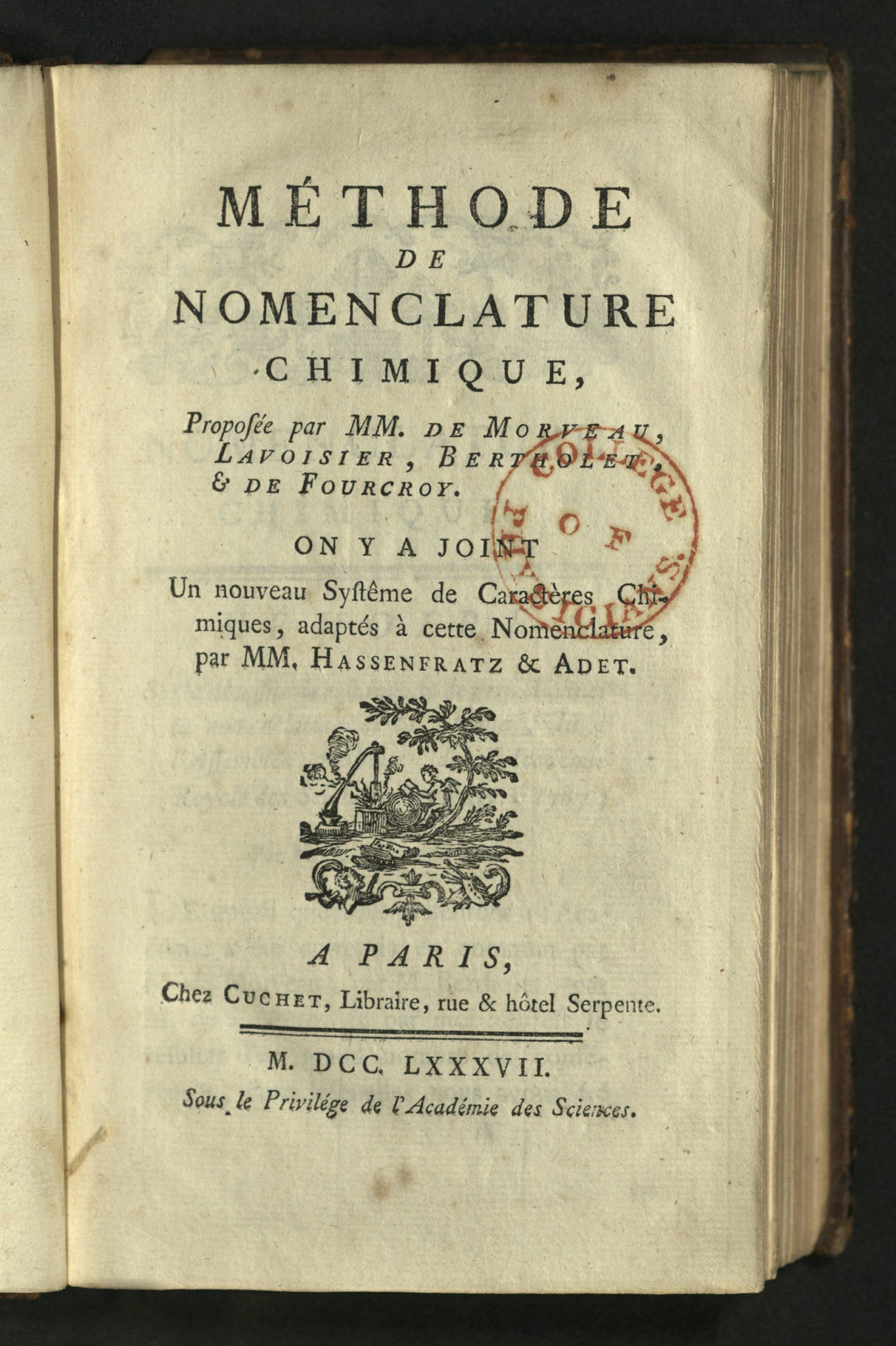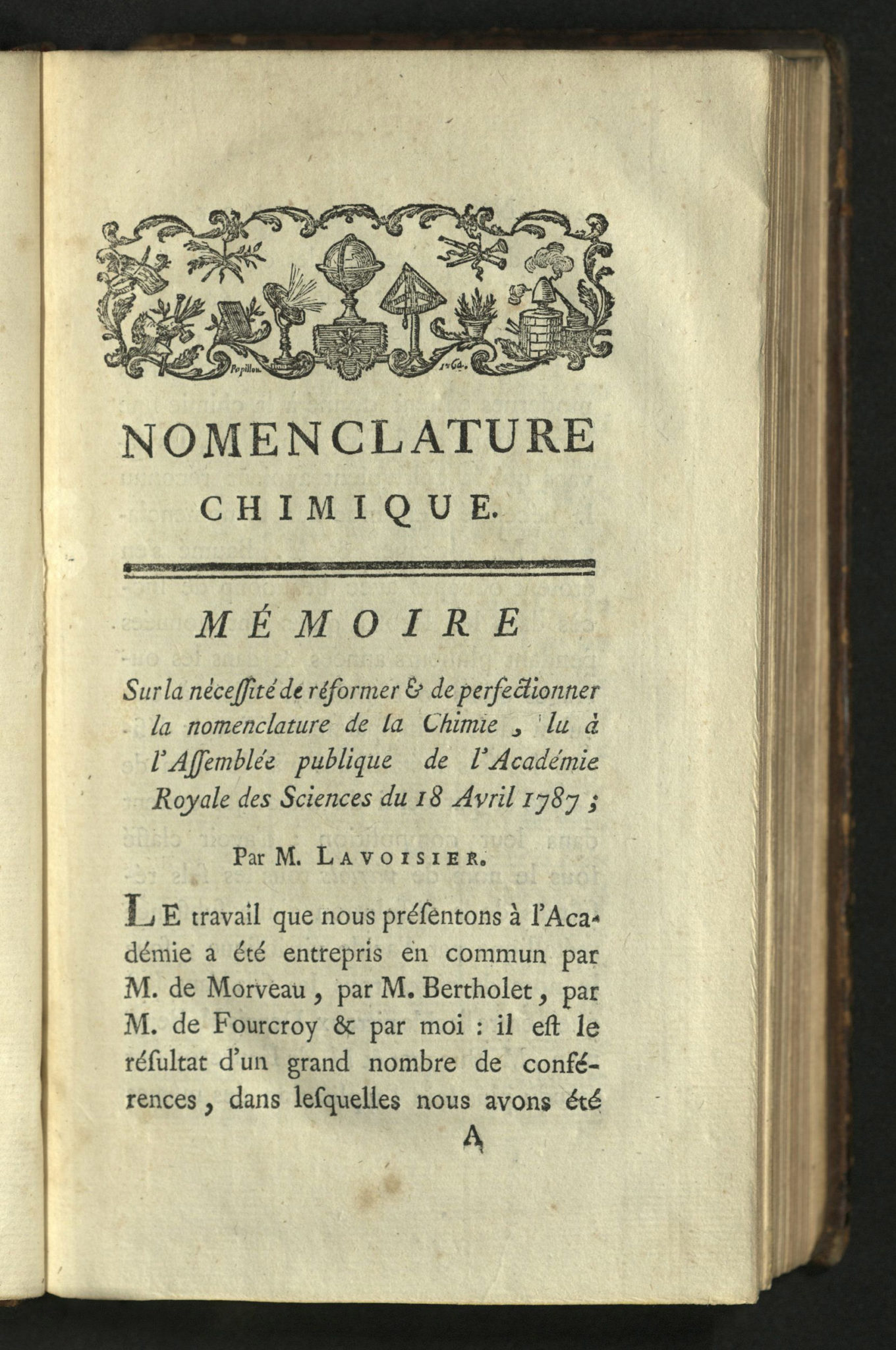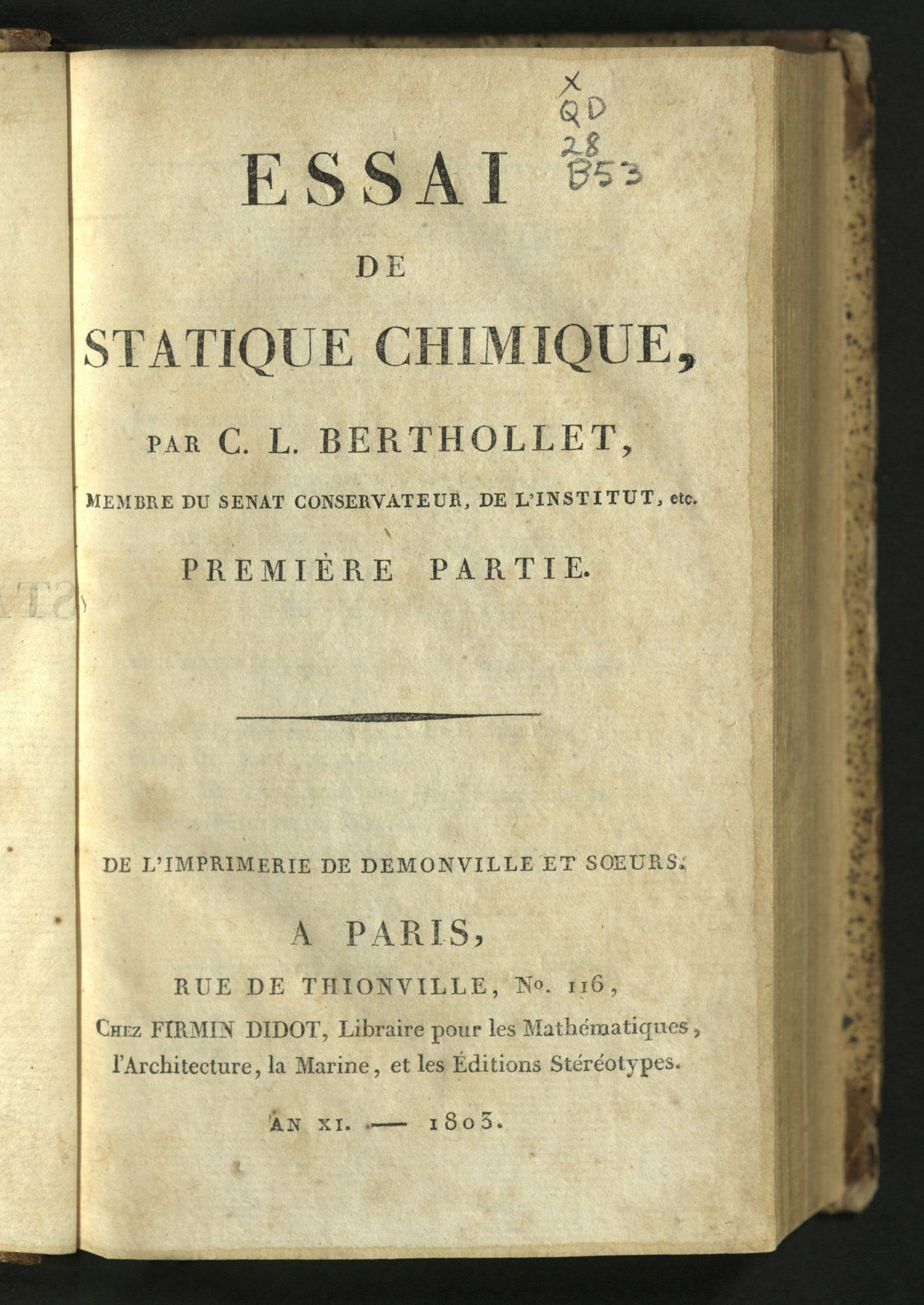Tags
alchemical, Alexander von Humboldt, Antoine de Fourcroy, Antoine Lavoisier, Arcueil Society, chemical nomenclature, chemist, chemistry, Claude-Louis Berthollet, Cuchet, Didot, explorer, French, geographer, Greek, language, Latin, Louis Bernard Guyton de Morveau, mathematician, nature, Paris, Pierre-Simon Laplace, pressure, quantity, reactants, solubility, temperature

In the study of nature, as in the practice of art, it is not given to man to achieve the goal without leaving a trail of dead ends he had pursued. — Louis Bernard Guyton de Morveau
La Méthode de nomenclature chimique
Louis Bernard Guyton de Morveau (1737-1816)
Paris: Cuchet, 1787
First edition, first issue
QD7 G85
Antoine Lavoisier’s discoveries made a new and rational chemical nomenclature imperative. Initiated by Louis Bernard Guyton de Morveau, the project was taken up by Lavoisier, who soon convinced Guyton of the sense of his new system. The two collaborated with Claude-Louis Berthollet (1748-1822) and Antoine de Fourcroy (1755-1809), all of whom put together Méthode de nomenclature, replacing traditional alchemical language with a new system, still the basis of the language of modern chemistry. The system was quickly accepted after initial mass resistance.

A chemical name should not be a phrase…it should recall the constituents of a compound; it should be non-committal if nothing is known about the substance; the names should preferably be coined from Latin or Greek, so that their meaning can be more widely and easily understood; the form of the words should be such that they fit easily into the language into which they are to be incorporated. — from La Méthode de nomenclature chimique
Essai de statique chimique
Claude-Louis Berthollet (1748-1822)
Paris: F. Didot, 1803
First edition
Trained as a physician, the French chemist Claude-Louis Berthollet attempted to provide a basis for chemistry so that its experimental results could be viewed in the light of theoretical first principles. In this attempt, Berthollet recognized the importance of the theory of affinity.
According to the Essai, there were two main types of force in nature: gravitation, which accounted for astronomical phenomena, and chemical affinity. Berthollet proved that chemical affinity was relative, varying with the physical conditions accompanying a chemical experiment: quantity, temperature, solubility, pressure, and physical state. Berthollet introduced the concept of ‘chemical mass’ — relative affinity combined with the mass of reactants in a chemical combination — to give the total force with which a given quantity of a substance reacted with another.
In his work, Berthollet was critical of some of Lavoisier’s theories. His experiments with acidity, for example, were more substantial than those of Lavoiser. Nonetheless, Berthollet’s theories were never particularly successful in the eyes of his contemporaries.
Still, Berthollet worked closely with some of the best scientific minds of the time: Mathematician Pierre-Simon Laplace (1749-1827) contributed two extensive footnotes to Essai. He and Berthollet eventually lived next door to each other, forming the Arcueil Society, along with geographer and explorer Alexander von Humboldt (1769-1859), about whom Berthollet said, “This man is as knowledgeable as a whole academy.”


You must be logged in to post a comment.